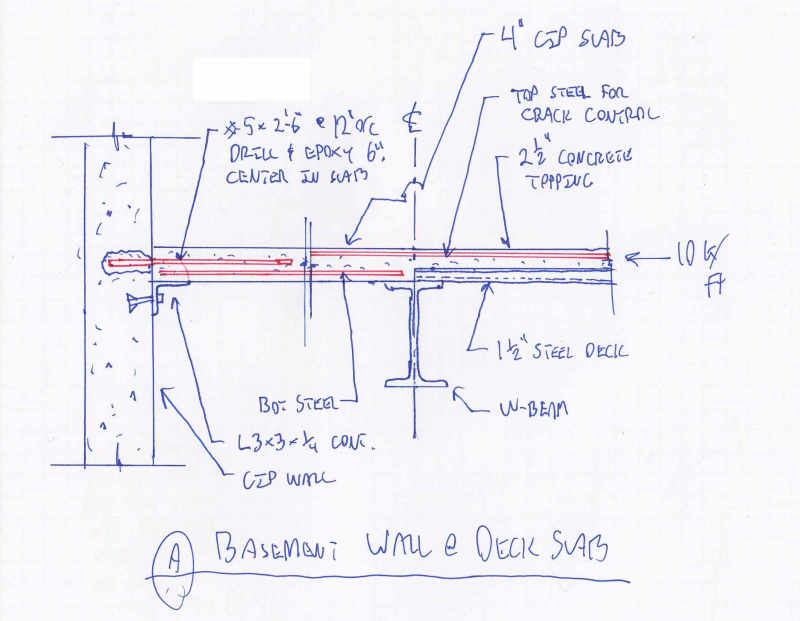jdgengineer
Structural
- Dec 1, 2011
- 748
We are working on a multilevel residential basements project. In one area, the basement is roughly two stores deep with 12.5' story heights. We currently have the intermediate level as metal deck with steel beams.
We are running into some problems residing the retaining pressures with the metal deck. Our initial thought was to try and resolve it as a subdiaphragm similar to tiltup construction but we are having issues with the diaphragm shears.
I've discussed using the deck as a compression mber with verco but they weren't entirely helpful and didn't have any testing to back it up. They suggested using only the topping slab (even when parallel to flutes)
How have you been able to make an intermediate basement level work with metal deck? Or is concrete slab really the only feasible option?
We are running into some problems residing the retaining pressures with the metal deck. Our initial thought was to try and resolve it as a subdiaphragm similar to tiltup construction but we are having issues with the diaphragm shears.
I've discussed using the deck as a compression mber with verco but they weren't entirely helpful and didn't have any testing to back it up. They suggested using only the topping slab (even when parallel to flutes)
How have you been able to make an intermediate basement level work with metal deck? Or is concrete slab really the only feasible option?




